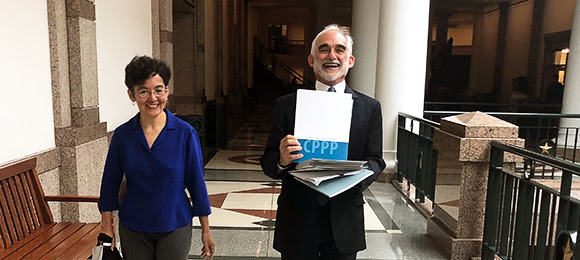
A Message from Legislative and Policy Director Luis Figueroa
It’s show time in the Texas House of Representatives. The only bill the Legislature is required to pass – the state budget – will be up for debate tomorrow (March 27). Members will discuss and amend the 2020-2021 state budget proposal (House Bill 1), along with a supplemental spending plan to cover extra expenses for 2019 and 2020-2021 (Senate Bill 500). Lawmakers have filed more than 300 amendments to HB 1, and these amendments carry major implications for access to education, health care and other key programs that affect every Texan.
Ahead of tomorrow’s debate, here are a few things to keep in mind:
- The budget-writing House Appropriations Committee approved a 2020-2021 budget (House Bill 1) that would spend $251 billion in state and federal funds. This “All Funds” amount includes $2.3 billion from the Economic Stabilization Fund (usually called the Rainy Day Fund), much of it for one-time uses.
- Representatives have filed over 300 amendments, including a good one by Rep. César Blanco to help reduce an undercount in the upcoming 2020 Census. This support is crucial to ensure representation at all levels of government, federal funding, accurate data, and business investment in Texas. Another amendment by Rep. John Bucy would wisely direct the state’s Health and Human Services Commission to accept Medicaid expansion funding.
- We’re also grateful to Rep. Carl Sherman for filing an amendment to create a Kinship Navigator Program to provide information, referral, and follow-up services to grandparents and other relatives raising extended families’ children in order to link them to the benefits and services they need.
- Amendments to the budget on the House floor are governed by the “put-take” rule, which means adding General Revenue or ESF funds in one part of the budget requires reducing appropriations from those somewhere else.
In the supplemental budget (SB 500), the House makes changes to the 2018-2019 budget, adding $7.2 billion in spending through August 31, 2019. SB 500 also proposes $2.1 billion for state services in 2020-2021, mainly for public education and teacher and state employee retirement. The 2019 spending includes funds needed because of damage and recovery costs from Hurricane Harvey, which struck after the 2017 legislative sessions had concluded. But SB 500 also contains $2.1 billion in General Revenue and $2.3 billion in federal funds needed to pay for the remainder of 2019’s Medicaid bills, which the 2017 Legislature chose to postpone for a 2019 supplemental bill.
We will have live analysis during the Texas House debate on Wednesday (@CPPP_TX). Be sure to follow our Invest in Texas Program Director Eva DeLuna Castro (@DeLunaEva) for her unique brand of budget analysis, fact-checking and humor. Look for more analysis of the final House budget and how it compares to the Senate’s proposal in the weeks ahead, as the conference committee process begins. Most likely, the biggest difference will continue to be found in the two chambers’ proposals for state aid to school districts, charter schools, and the more than 5 million Texas school children they educate.
The final 2020-2021 budget compromise will affect every Texan since it provides for state-supported public higher education, health care, highways, public safety, environmental protection, and other services.
